When you explore the oldest Hong Kongese fashion brands, you'll discover a rich tapestry of heritage and creativity. Notable names, like A.S. Watson, which started as an apothecary in 1858, and the beloved Leung So Kee, the oldest handmade umbrella maker, showcase traditional craftsmanship. Brands such as Chow Tai Fook ingeniously merge old-world artistry with luxury. The late 20th century saw shifts in styling, reflecting cultural influences and adapting to global trends. These brands not only tell a story but also embody resilience amidst modern challenges. Excitingly, there's much more to uncover about their impact on today's fashion landscape.
Historical Overview of Hong Kong Fashion
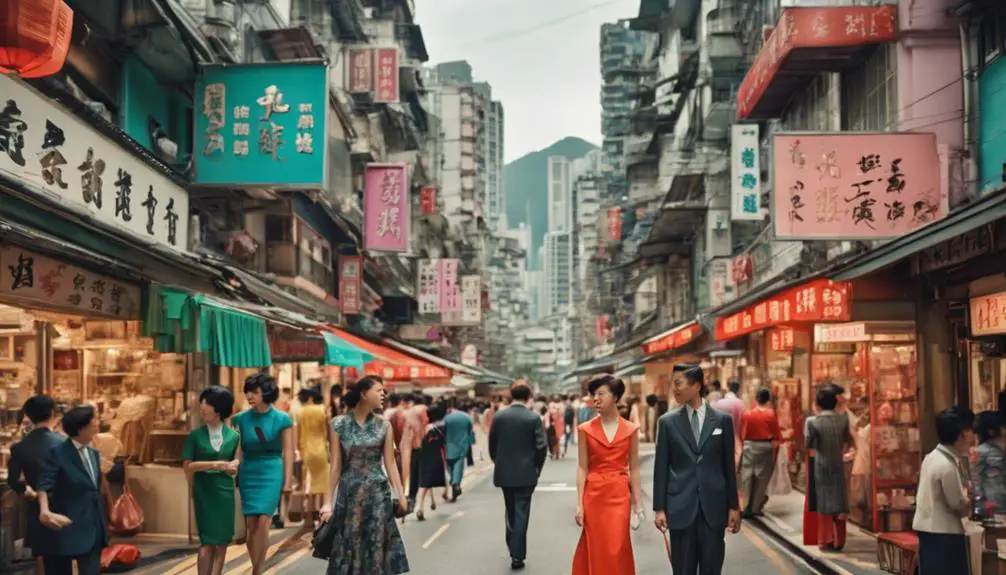
As Hong Kong's fashion industry began to flourish in the post-war era, it transformed into a vibrant hub for creativity and style. The 1950s witnessed a considerable influx of refugees, coupled with preferential tariffs from the British Commonwealth, which laid the groundwork for a booming garment industry. This environment allowed local Hong Kong companies to emerge and thrive, focusing on innovative designs that catered to an evolving consumer market.
By the late 1960s and 1970s, brands like Bang Bang Fashions showcased the cultural shifts of the time, tapping into a youthful audience enthusiastic for trendy and affordable clothing. The establishment of the Hong Kong Trade Development Council (HKTDC) in 1966 became a game-changer, promoting local designers and connecting them with global fashion buyers, further bolstering the industry.
The 1980s marked a golden era, as designers like Walter Ma and Joyce Ma took center stage, greatly influencing local trends and styles. Vintage clothing began to gain popularity, reflecting a nostalgic appreciation for past fashions while blending seamlessly with modern aesthetics.
As you explore the historical overview of Hong Kong fashion, you can see how the economic growth and evolving consumer preferences positioned the city as a prominent fashion hub in Asia. Today, Hong Kong's rich tapestry of style continues to adapt, celebrating its heritage while embracing the future, inviting you to witness its exciting journey through fashion history.
Notable Heritage Brands
In the heart of Hong Kong's vibrant culture, notable heritage brands stand as symbols of the city's rich history and craftsmanship. These brands not only reflect the essence of traditional craftsmanship but also embody the spirit of innovation that has fueled their longevity. One such brand is the Leung So Kee Umbrella Factory, recognized as the oldest handmade umbrella maker in China, which has been crafting exquisite umbrellas for over 139 years. Their dedication to quality and artistry makes them a shining example of Hong Kong's heritage.
Then there's Lee Kum Kee, founded in 1888, renowned globally for its oyster sauce. With products shipped to over 100 countries, this brand showcases how heritage can transcend local boundaries while keeping traditional recipes alive. A.S. Watson, established in 1858, began as a humble pharmacy and has grown into Asia's largest health and beauty retailer, proving that heritage brands can adapt and thrive in a changing marketplace.
Vitasoy, created in 1940 to combat malnutrition among refugees, continues to serve its original soy milk products while promoting health and wellness. Finally, Po Chai Pills has been a staple in traditional herbal medicine for over 120 years, highlighting the enduring legacy of holistic remedies in Hong Kong. These heritage brands not only connect you with the past but also inspire future generations to appreciate the intricate artistry and cultural significance behind them.
Evolution of Fashion Trends
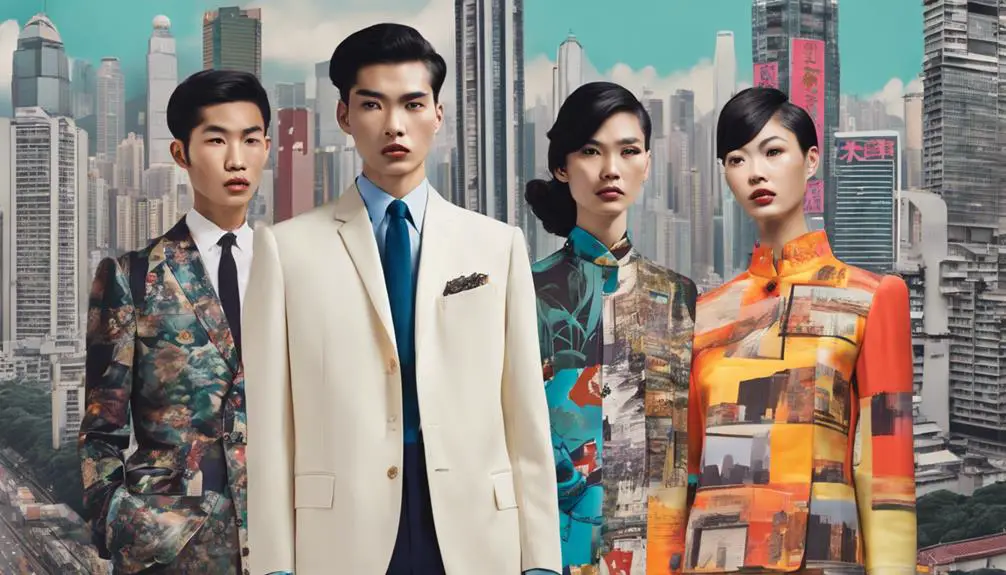
Fashion trends in Hong Kong have evolved dramatically over the decades, reflecting both local culture and global influences. In the 1950s, custom-made clothing reigned supreme, with affluent women opting for tailored cheongsams, heavily influenced by Hollywood films that introduced Western aesthetics. However, by the 1960s, the popularity of the cheongsam began to decline, making way for Western-styled clothing like miniskirts and A-line dresses. The introduction of a ready-to-wear festival in 1968 marked a turning point, as accessibility to fashion flourished.
The 1970s embraced playful and experimental styles, thanks in part to fashion icons like Josephine Siao Fong-fong, who inspired a vibrant local fashion scene. This era encouraged creativity and individual expression, paving the way for the androgynous fashion movement of the 1980s. Bold styles, exemplified by Anita Mui, challenged traditional gender norms with the adoption of shoulder pads and the iconic Saint Laurent Le Smoking look.
As we entered the 1990s, a shift occurred towards grunge aesthetics, characterized by free-flowing outfits and unconventional hairstyles. This period emphasized personal expression, allowing individuals to blend various cultural influences into their clothing choices.
Today, the evolution of fashion trends in Hong Kong continues to reflect a rich tapestry of history, innovation, and cultural dialogue. Each decade has contributed to a dynamic fashion landscape, making it an exciting place for style enthusiasts to explore the ever-changing world of clothing.
Cultural Significance of Brands
Brands in Hong Kong aren't just businesses; they represent the cultural heartbeat of the city. They weave together the threads of traditional craftsmanship and modern innovation, reflecting Hong Kong's rich history and vibrant identity. Take A.S. Watson, for instance, established in 1858. This brand has evolved from a simple apothecary to Asia's largest health and beauty chain, showcasing the entrepreneurial spirit that defines the region.
Then there's Lee Kum Kee, founded in 1888, which epitomizes the cultural significance of culinary heritage. Their sauces and condiments not only spice up meals but also celebrate local craftsmanship, reminding you of the flavors that have shaped Hong Kong's culinary landscape.
Chow Tai Fook, a jewelry brand that launched in 1929, brilliantly merges traditional craftsmanship with modern luxury. With over 4,000 stores globally, it reflects the global outreach of Hong Kong's artisanship while retaining its local roots.
Even the Leung So Kee Umbrella Factory stands out as the oldest handmade umbrella maker in China, showcasing the importance of preserving traditional methods while adapting to contemporary fashion trends.
These iconic brands highlight the cultural tapestry of Hong Kong, demonstrating their ability to remain relevant amidst changing times. They not only provide products but also tell stories, embodying the spirit of resilience and creativity that characterizes this dynamic city. Through them, you can truly appreciate the deep cultural significance that these brands hold in the hearts of Hong Kongers.
Challenges Facing Traditional Brands
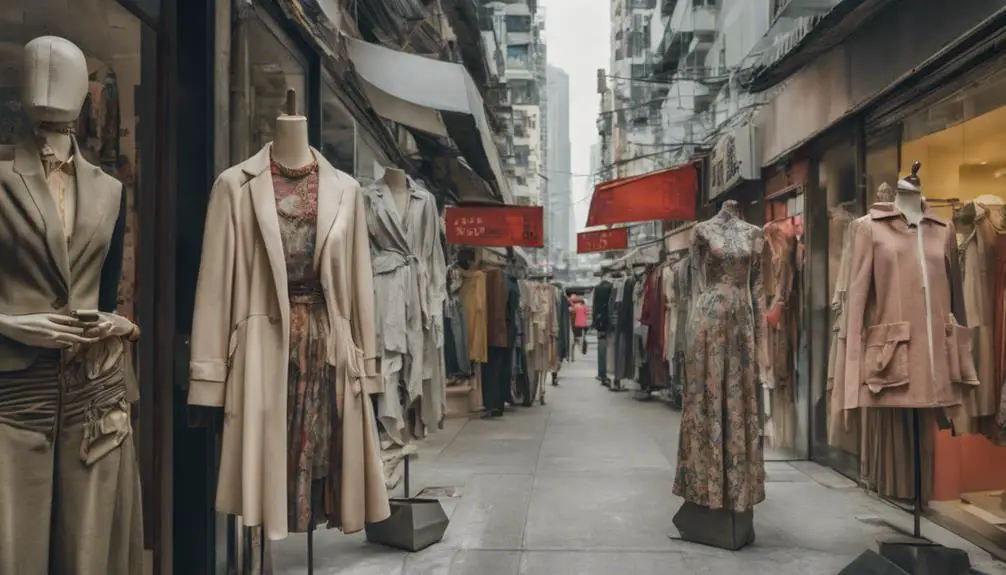
Traditional Hong Kongese fashion faces a tough landscape as international fast fashion labels dominate the market. These brands have rapidly adapted to shifting consumer preferences, often offering trendy styles at lower price points. Unfortunately, this leaves traditional brands grappling with significant challenges that threaten their market presence and authenticity.
| Challenges | Impacts | Solutions |
|---|---|---|
| Intense competition | Declining sales and market share | Innovate product offerings |
| Rising operational costs | Reduced creativity and quality | Optimize supply chains |
| Shift to online shopping | Marginalized retail presence | Enhance online market strategies |
| Changing consumer behavior | Loss of loyal customer bases | Engage with social media influencers |
Many historic brands struggle to maintain relevance in a world increasingly driven by social media and fleeting trends. The reliance on traditional retail spaces can hinder their ability to adapt to the convenience-driven shopping habits of modern consumers. Economic fluctuations and political changes, especially following the COVID-19 pandemic, have disrupted supply chains, further complicating the landscape.
To tackle these challenges facing traditional brands, it's essential to embrace innovation while honoring heritage. By enhancing online strategies and engaging with influencers, these brands can reconnect with younger audiences and reclaim their market presence. Ultimately, balancing tradition with modernity might just be the key to survival and success in this vibrant fashion scene.
Frequently Asked Questions
Which Fashion Brand Is the Oldest?
You'll find that the oldest fashion brand showcases a rich heritage influence, illustrating craftsmanship evolution. Local designers have drawn inspiration from these early brands, weaving history into contemporary styles, making them integral to Hong Kong's fashion narrative.
When Did Clothing Start Being Made in Hong Kong?
You'll find that clothing history in Hong Kong truly blossomed in the late 1960s, as the textile industry shifted towards mass production. Local craftsmanship flourished, meeting the rising demand from international markets.
What Is the Traditional Clothing in Hong Kong?
In Hong Kong, traditional clothing like the cheongsam and tangzhuang showcases cultural significance. You'll notice textile evolution as these garments undergo modern adaptations, blending heritage with contemporary styles for festive occasions and everyday wear.
Do Clothes Still Say Made in Hong Kong?
Yes, you'll still find clothes labeled "Made in Hong Kong." These garments blend local craftsmanship with modern styles and cultural influences, creating unique pieces that celebrate both heritage and contemporary fashion trends.
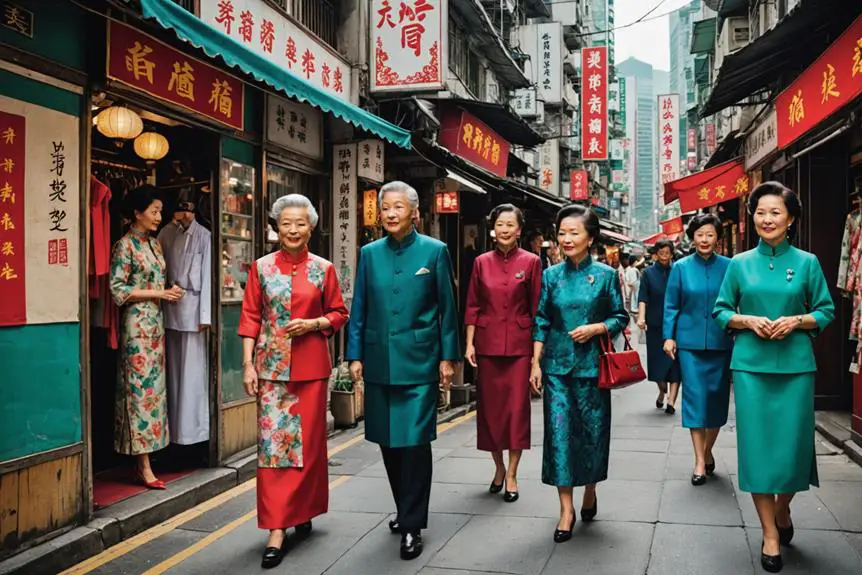

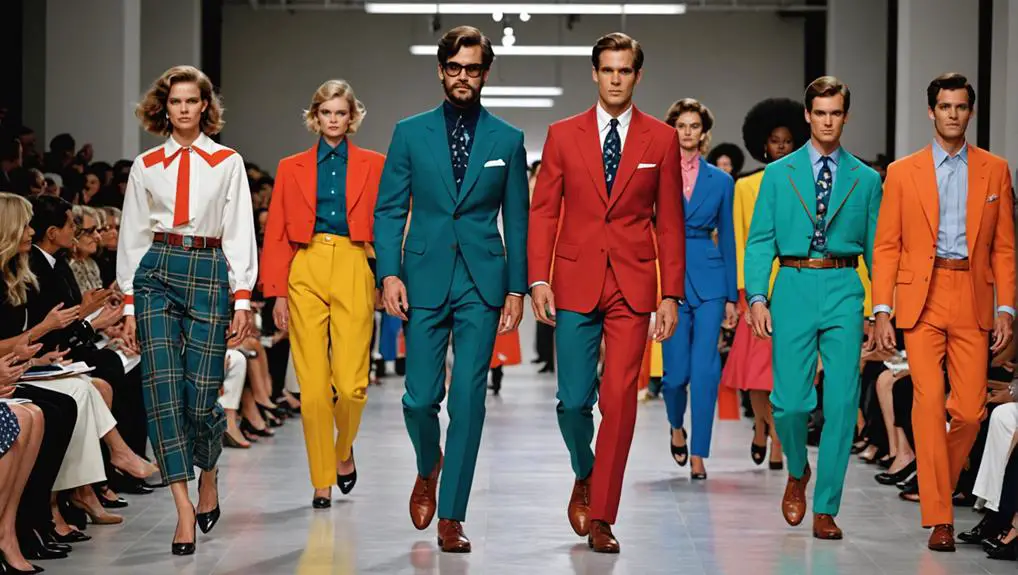
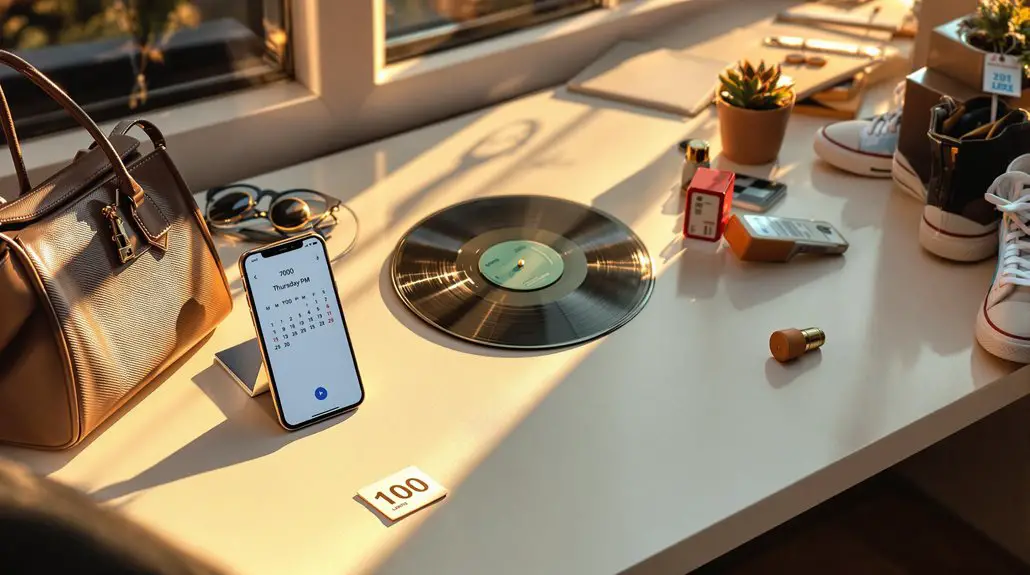
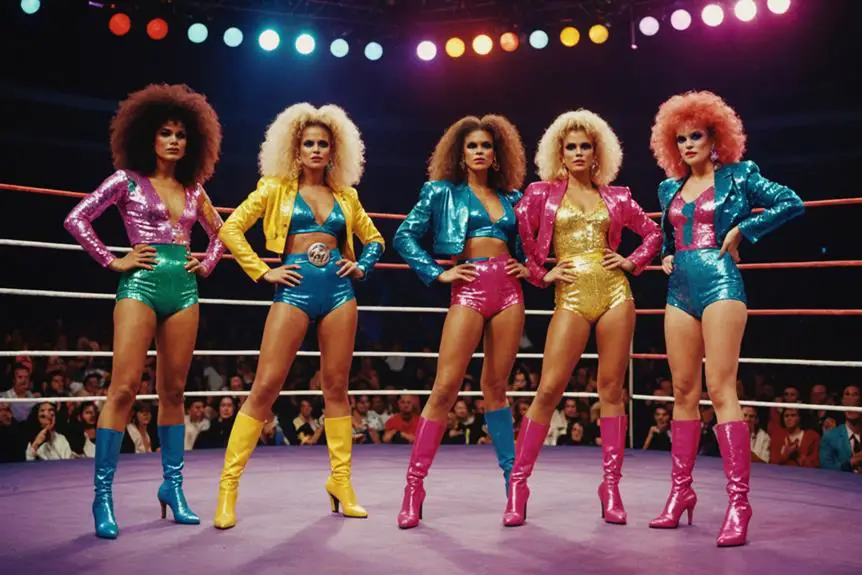
I have been browsing online more than three hours today, yet I never found any interesting article like yours.
It is pretty worth enough for me. Personally, if all webmasters and bloggers
made good content as you did, the web will
be much more useful than ever before.
web site
It’s hard to find knowledgeable people about this
subject, however, you seem like you know what you’re talking about!
Thanks
casino en ligne
I read this post fully about the comparison of most up-to-date and previous
technologies, it’s amazing article.
casino en ligne
I believe what you posted made a lot of sense. But,
think about this, suppose you added a little information? I
mean, I don’t want to tell you how to run your website, but suppose you added a post title to possibly grab folk’s attention? I mean Oldest Hong Kongese
Fashion Brands – VCG is a little boring. You ought to peek at Yahoo’s
front page and watch how they create news titles to get
viewers to open the links. You might add a related video or a related pic or two to grab readers interested about everything’ve got to say.
Just my opinion, it would bring your posts a little bit more interesting.
casino en ligne
What’s up, the whole thing is going fine here and ofcourse every one is sharing data, that’s truly fine, keep up writing.
casino en ligne
Hi there! I just wanted to ask if you ever have any problems with hackers?
My last blog (wordpress) was hacked and I ended up losing months of hard work due to no
data backup. Do you have any solutions to protect against hackers?
casino en ligne
Excellent items from you, man. I’ve consider your stuff previous
to and you are simply extremely excellent. I actually
like what you’ve obtained here, certainly like what you’re stating and the way by which
you assert it. You are making it enjoyable and you
still care for to stay it wise. I can not wait to read
much more from you. This is really a tremendous web site.
casino en ligne
We are a group of volunteers and starting a new scheme in our community.
Your site provided us with valuable info to work on. You’ve
done an impressive job and our whole community will be grateful to you.
casino en ligne
As the admin of this web site is working, no
doubt very shortly it will be well-known, due to its feature
contents.
casino en ligne
I constantly spent my half an hour to read this webpage’s content daily
along with a mug of coffee.
casino en ligne